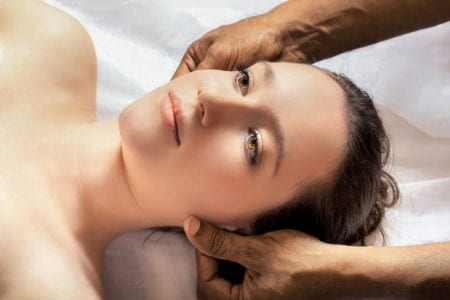 Head massage has been used since ancient times. Today, there are many different techniques used for therapeutic and cosmetic purposes.
Head massage has been used since ancient times. Today, there are many different techniques used for therapeutic and cosmetic purposes.
The simplest massage techniques were practiced more than five thousand years ago. Indian head massage techniques based on the Ayurvedic treatment system were practiced in ancient India about 2000 years ago.
A little later, in the XIII-XIV centuries, the Burmese massage technique appeared. Initially, it was used to quickly recuperate warriors after the battle. The short procedure made it possible to quickly rehabilitate tired soldiers. In the XIX century Burmese combat massage was studied in Buddhist monasteries. An interesting fact is that this unique technique has been preserved only thanks to the martial arts.
Indications for various types of massage
The technologies for massage of the scalp applied in modern medicine and cosmetology can be divided into two main groups:
- Healing;
- Cosmetic.
Each group has its own indications and contraindications. Therapeutic massage is performed in the following conditions:
- headache;
- sleep disorders;
- drowsiness;
- chronic fatigue;
- alarm conditions;
- stress;
- emotional imbalance;
- muscle spasms;
- convulsions;
- pains in the joints and muscles of the shoulders, neck, face, head.
Some types of head massages are indicated at elevated pressure (for example, Indian technique).
Cosmetic massage is prescribed for many problems with the hair and scalp. The main ones are:
- dandruff;
- increased dryness of the scalp and hair;
- hair loss;
- deterioration of their condition (fragility, split ends);
- seborrhea.
Effect
Massage of the head and neck enhances local blood circulation, lymph flow and metabolic processes, thereby achieving a number of positive effects:
- nutrition of the hair roots and their appearance improves;
- facial swelling, eye fatigue and headaches are eliminated;
- reduced levels of tension, anxiety and stress;
immunity is strengthened; - relieves spasm of connective and muscle tissue;
insomnia passes; - memory improves;
- concentration of attention increases;
- mental activity is activated.
Contraindications to the procedure
Massage is not recommended in the presence of such problems as:
- any damage to the scalp;
- eczema;
- fungal skin diseases;
- baldness;
- dilated blood vessels on the face;
- increased hair greasiness;
- recent surgery;
- heat;
- spondylosis;
- spondyloarthritis;
- thrombosis;
- embolism;
- acute stage of any chronic diseases;
- oncological diseases;
- problems with heart.
Preparatory activities
Special preparation of the patient for a head massage is not required.
Cosmetic procedure is carried out before washing the hair or directly during it. The use of a special technology contributes to the optimal absorption of nutrients that are part of the used hair care products. The procedure can be performed on pre-washed hair, but it is necessary to take into account that massage activates sebum secretion and leads to rapid contamination of hair.
Alcohol is not recommended for 5 hours before a therapeutic massage.
! To enhance the therapeutic effect, you can pre-treat the scalp with infusions of medicinal herbs.
Indian head massage is best done after a preliminary application of Ayurvedic oils to the skin.
Methodology
Features of therapeutic massage
The simplest therapeutic head massage is used to improve blood circulation and to get rid of a headache. It is held with the fingers of both hands. Movement produced with little pressure on the skin.
The patient sits or reclines in a relaxed, comfortable posture. It is better to dim the light, because bright light can cause increased headaches.
- The procedure begins with the back of the ears, making circular movements with the pads of the fingers.
- Hands are located on both sides of the head and slightly squeeze it. The skin can be slightly shifted up and down, forward and back. With self-massage, you can move your head, not your arms.
- A similar movement should be repeated at the base of the skull, on the back of the neck.
- The same techniques to work out the entire surface of the head.
Proper head massage includes a point effect. It is especially effective for severe headaches and significant muscle tension.
In the areas of localization of pain, the skin should be clamped between two fingers (thumb) and squeezed for 5-6 seconds, then relieve pressure. After that, fingers do not need to be removed for another 10 seconds. This technique is repeated until a feeling of relaxation appears.
Another massage technology for headaches involves concentrating on the area of the temples and the base of the skull. These areas are massaged with slow, gentle movements for 5-6 minutes.
Using the pads of the index and middle fingers, they slightly squeeze the temples and describe small circles at a slow pace. You can also rhythmically press on the temporal zone.
On the back of your head, join your hands to the lock and move them up and down along the spinal column. Thanks to this technique, the blood circulation is activated, the brain is saturated with oxygen, yawning, drowsiness, lethargy take place, and nervous tension is eliminated. Reviews of some patients show even improved vision as a result of regular such a head massage.
Picture Credit: guvo59
